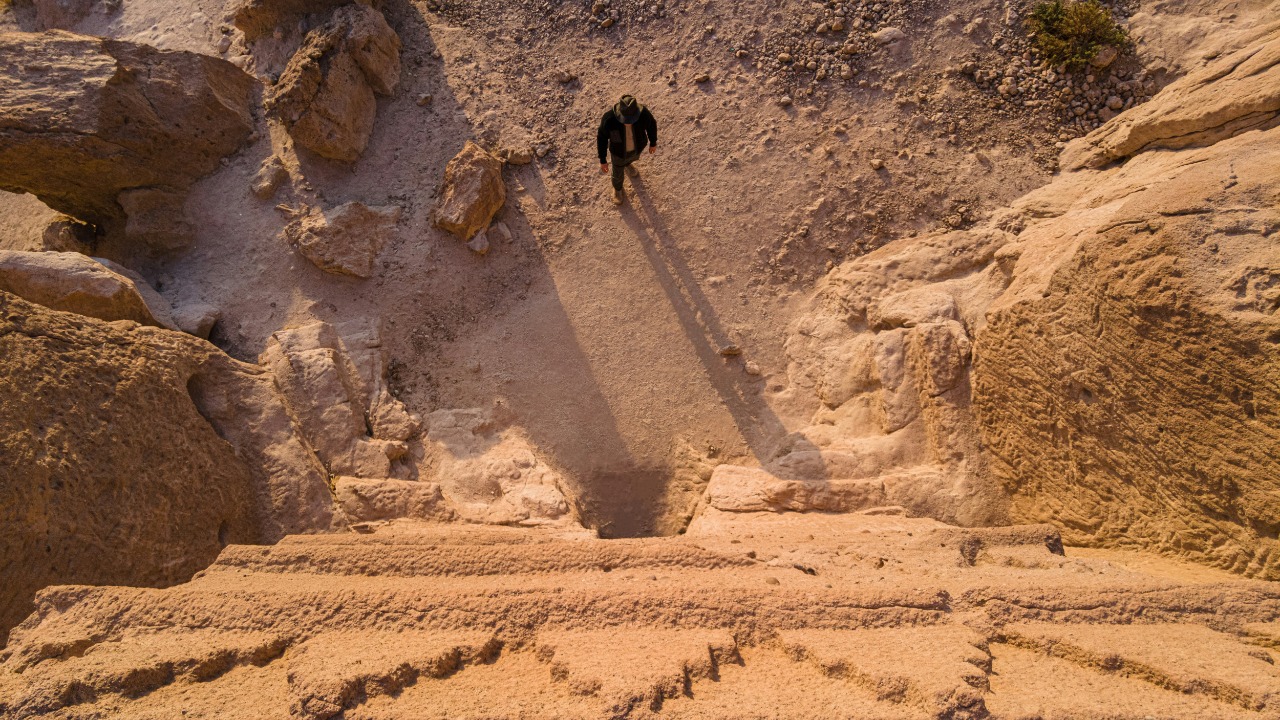
Archaeologists have made a groundbreaking discovery in Jerusalem, unearthing a 3,000-year-old structure that may be linked to accounts from the Bible. This find not only sheds light on ancient architectural practices but also offers potential insights into historical events mentioned in sacred texts. The discovery provides a new lens through which to view the ancient world, blending archaeology with biblical history in a compelling way.
Historical Significance and Context

The timeline of the newly discovered structure places it firmly in an era of significant biblical activity, dating back approximately 3,000 years to the period of the United Monarchy under kings like David and Solomon. This was a time when Jerusalem was a burgeoning city, developing both politically and religiously. The newly found structure may coincide with this transformative period, offering a potential link to the times and events described in the Old Testament.
Exploring the potential connections to biblical events, researchers have noted that the structure’s age and location could relate to stories from the Old Testament, such as those involving King Solomon’s extensive building projects. While definitive evidence linking the structure to specific biblical narratives remains elusive, the possibility alone has stirred excitement among scholars and the faithful alike. The discovery invites comparisons with previous archaeological finds in the region, such as the City of David and Hezekiah’s Tunnel, both of which have provided valuable insights into the biblical past.
According to reports, this structure stands among other significant archaeological findings in Jerusalem, further enriching our understanding of the historical landscape. Each discovery adds a new piece to the intricate puzzle of Jerusalem’s ancient history, offering more context for the narratives that have shaped religions and cultures worldwide.
The Discovery Process

The excavation site is strategically located in a historically rich area of Jerusalem, a city that has long been a focal point for archaeologists due to its deep historical and religious significance. Initial findings that led to the discovery included pottery and tools that hinted at a larger structure buried beneath the earth. As archaeologists meticulously uncovered layers of history, the outline of this ancient structure began to emerge, capturing the attention of historians and biblical scholars alike.
Archaeologists employed a variety of methodologies to uncover the structure, utilizing both traditional excavation techniques and modern technologies. Ground-penetrating radar and 3D modeling allowed the team to visualize the site before extensive digging began. These technologies facilitated a more precise excavation, minimizing damage to the delicate artifacts and structures. Despite these advancements, the team faced numerous challenges, such as unpredictable weather conditions and the complex urban landscape of modern Jerusalem, which required careful planning and adaptation.
Overcoming these obstacles, the team successfully unearthed the structure, revealing intricate details of ancient construction techniques. The discovery process was documented extensively, with each phase of the excavation providing new insights into the architectural and cultural practices of the time. This meticulous work has not only preserved the integrity of the structure but also paved the way for further exploration and study.
Architectural and Cultural Insights

The design and construction features of the structure offer a fascinating glimpse into the architectural styles of the period. The use of locally sourced stone and the precision of the masonry work suggest a high level of skill and organization among the builders. The architectural style reflects influences from neighboring cultures, indicating a region rich in cultural exchange and interaction.
The cultural implications of this discovery extend beyond mere architecture. The structure provides clues about the daily lives of the people who built it, their societal structure, and their interactions with surrounding regions. It suggests a community that was both advanced and connected, thriving in a dynamic and complex world. Such insights help scholars understand the broader cultural and historical context of the period.
Comparing this structure to other ancient edifices, such as those found in Megiddo or Hazor, highlights the unique aspects of its construction and use. Each structure from this era offers a different perspective on the ancient world, and this latest discovery is no exception, contributing to a more nuanced understanding of ancient societies.
Implications for Biblical Scholarship

The impact of this discovery on the historical accuracy of biblical accounts is profound, as it provides tangible evidence that supports certain aspects of the narratives found in sacred texts. Scholars are cautiously optimistic about the potential for this structure to clarify or confirm historical events mentioned in the Bible. However, as with all archaeological discoveries, interpretation requires careful consideration and scholarly debate.
Reactions from the scholarly community have been varied yet largely enthusiastic. Historians, theologians, and archaeologists are engaging in lively discussions regarding the significance of the find, as detailed in recent reports. The interdisciplinary nature of this research underscores its importance, bringing together experts from various fields to explore its implications.
Future research opportunities abound, as the discovery opens new avenues for exploration and study. Researchers are eager to further examine the site, hoping to uncover more artifacts that can provide additional context and clarity. The potential for new discoveries is vast, promising to enhance our understanding of this pivotal period in history.
Public and Media Reaction

The discovery has garnered extensive media coverage, with news outlets worldwide reporting on the find. The blend of archaeology and biblical history has captivated audiences, drawing attention from a wide range of media platforms. This widespread coverage highlights the public’s enduring fascination with ancient history and its connection to modern religious and cultural narratives.
Public interest and engagement have been significant, with religious communities and the general public expressing keen interest in the discovery. Tours of the excavation site and educational programs are already being planned, aiming to share the findings with a broader audience. The discovery has sparked conversations about the importance of preserving historical sites and the role of archaeology in understanding our shared past.
The educational and tourism potential of this discovery is immense, with possibilities for new exhibits and interactive experiences that bring ancient history to life. Jerusalem’s rich archaeological heritage continues to draw tourists from around the world, and this latest find is sure to enhance its appeal. As researchers continue to study the site, its significance will likely grow, offering new insights and inspiring future generations to explore the mysteries of the past.